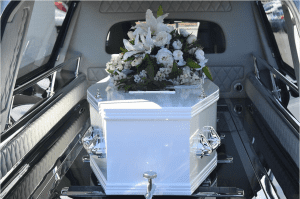Cremation involves the body being reduced to ashes.
Following are the details that must be attended to if you choose cremation:
- Select an urn in which the ashes will be placed or if you choose not to provide an urn, the crematorium will place the ashes in a temporary container.
- Choose where the ashes will be kept (in your home, a mausoleum, a columbarium or a burial plot) or decide where you want the ashes scattered. Check your state and local laws regarding where remains may or may not be scattered.
- If you choose to place the urn in a niche at a columbarium, you may choose an inscription and photo to be placed on the front of the niche.
Questions most frequently asked about cremation:
If I choose cremation, can I also have a funeral or memorial service?
Yes. Several options are available which may be combined with cremation:
Traditional public or private funeral – A traditional viewing of the body accompanied by a funeral service. After the service, the loved one is transported to the crematory where a committal service may be conducted if desired.
Modified service – This involves using some of the same aspects of a full service except that the service is held only at the funeral home or church or only at the crematory, not both.
Memorial service – This is usually held days or weeks after the loved one is cremated. The ashes may or may not be present depending on the family’s wishes.
Direct disposition with no service – With this option, the family chooses to have the loved one transferred from the place of death directly to the crematory with no funeral or memorial service conducted.
Is there a waiting period before a body can be cremated?
In some states there are laws requiring a 24 or 48 hour waiting period between the time of death and cremation.
What is usually done with cremated remains?
There are several options including the following:
Remains may be placed in an urn and kept by the
family.
The urn may be interred in a grave in a cemetery
or be placed in a columbarium, garden, or area in a cemetery designated especially for cremated remains.
The cremains may be divided among family members. The ashes may be placed in special containers provided by the family or in miniature urns which may be purchased from the crematory or the funeral home.
The ashes may be scattered. Check with your funeral director or local authorities to find out if there are any laws regarding where you may or may not scatter the ashes.
Does cremation affect the grieving process?
Different people grieve in different ways so the idea of
cremation may be difficult for some to accept. Careful consideration should be given to the personal wishes and cultural concerns of all surviving family members.
It is believed that cremation without a viewing or memorial service can leave an emotional void for some family members. Having a viewing and/or memorial service may help fill the void and be beneficial in their coping with grief.







